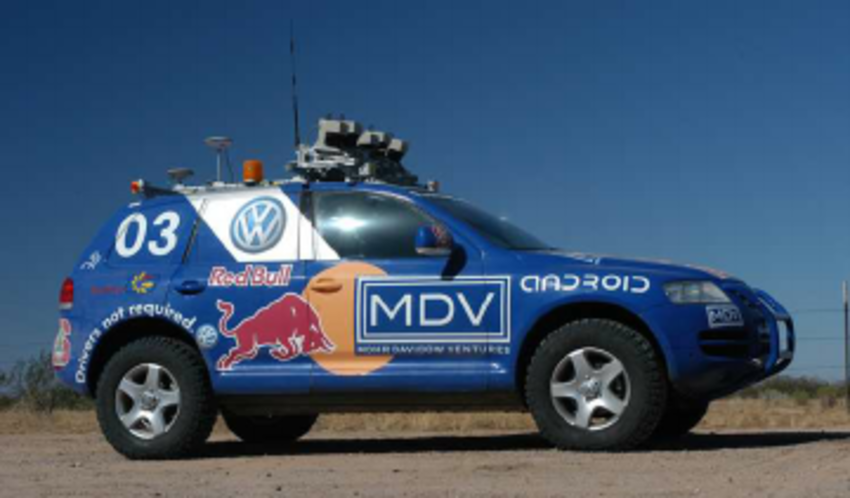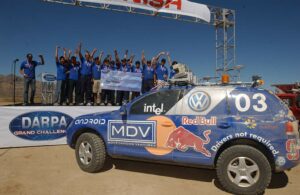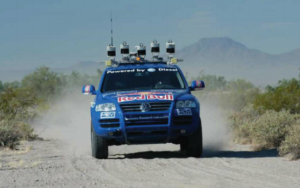
The DARPA Grand Challenge, organized by the Defense Advanced Research Projects Agency (DARPA), has been a catalyst for groundbreaking advancements in autonomous vehicle technology. In this article, we delve into CyberRider’s inspiring journey as a team of passionate engineers and technology enthusiasts, dedicated to developing unmanned vehicles. We explore their pursuit of excellence and their participation in the prestigious DARPA Grand Challenge, a platform that has pushed the boundaries of innovation in the field of autonomous driving.

The Birth of CyberRider
CyberRider was founded by a group of talented engineers who shared a common passion for autonomous vehicles. Motivated by the potential of this technology to transform transportation, they embarked on a journey to create unmanned vehicles capable of navigating complex environments. CyberRider’s team brought together expertise in robotics, artificial intelligence, computer vision, and systems engineering, laying a strong foundation for their ambitious project.
The DARPA Grand Challenge
The DARPA Grand Challenge, first held in 2004, aimed to accelerate the development of autonomous vehicle technology. The challenge involved designing vehicles capable of completing a 150-mile course through the desert, relying solely on self-driving capabilities. In subsequent years, the challenge evolved to include urban driving scenarios and more complex road conditions. Participation in the DARPA Grand Challenge became a prestigious opportunity for teams like CyberRider to showcase their technological prowess.
CyberRider’s Innovations
CyberRider’s journey to the DARPA Grand Challenge was marked by a series of innovative advancements. Their team focused on developing cutting-edge perception systems, robust decision-making algorithms, and precise control mechanisms. They tackled challenges such as sensor integration, obstacle detection and avoidance, and real-time data processing. Through extensive research, development, and rigorous testing, CyberRider honed their autonomous vehicle technology to meet the demanding standards of the DARPA Grand Challenge.
Collaborative Approach
CyberRider embraced a collaborative approach to innovation. They actively engaged with academia, industry experts, and fellow enthusiasts in the autonomous vehicle community. Collaborations provided valuable insights, resources, and opportunities to exchange ideas. By leveraging collective knowledge and expertise, CyberRider accelerated their progress, making strides towards their goal of participating in the DARPA Grand Challenge.
Lessons Learned and Future Prospects
Participating in the DARPA Grand Challenge was an invaluable learning experience for CyberRider. The team encountered numerous obstacles, both technical and logistical, which challenged their problem-solving skills and resilience. But with each setback, they gained valuable insights and knowledge, propelling them closer to their ultimate vision. The lessons learned from their participation in the DARPA Grand Challenge continue to shape their ongoing research and development efforts.
Looking to the future, CyberRider remains committed to pushing the boundaries of autonomous vehicle technology. They continue to refine their algorithms, enhance sensor capabilities, and explore new avenues for innovation. While the DARPA Grand Challenge was a significant milestone in their journey, it was just the beginning. CyberRider’s ultimate aim is to contribute to the advancement of autonomous vehicles, making them safer, more efficient, and ultimately transforming the way we travel.
Conclusion
CyberRider’s participation in the DARPA Grand Challenge exemplifies the spirit of innovation and dedication to advancing autonomous vehicle technology. Their journey showcases the power of collaboration, perseverance, and the pursuit of excellence. As they continue to refine their technology and contribute to the field, CyberRider is poised to play a crucial role in shaping the future of autonomous driving, revolutionizing transportation and redefining the limits of innovation.


